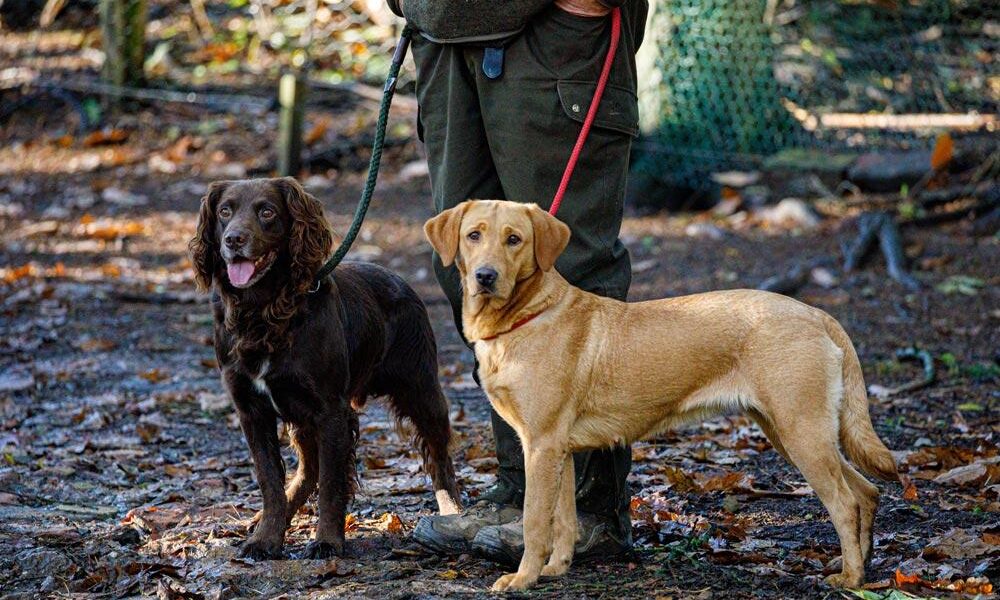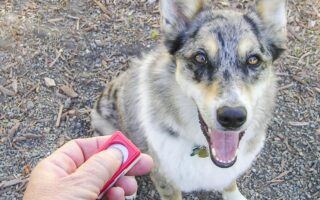Unlocking Potential: The Art of Gun Dog Training
In the serene early morning light, the world awakens with the gentle rustle of leaves and the distant call of waterfowl. Here, the bond between hunter and companion takes center stage, not merely as a partnership, but as a harmonious blend of instinct, discipline, and skill. Gun dog training is more than just a methodical approach to preparing a dog for the field; it’s an enriching journey that transforms an eager puppy into a confident hunting partner. Whether you’re a seasoned sportsman or a novice enthusiast, understanding the nuances of gun dog training can deepen your appreciation for this age-old tradition. Join us as we explore the foundational principles, techniques, and philosophies that empower both dog and handler, ensuring that each outing is filled with the thrill of the chase and the satisfaction of teamwork in the great outdoors.
Table of Contents
- Understanding the Fundamentals of Gun Dog Training
- Establishing Effective Communication with Your Shooting Companion
- Techniques for Building Retrieving Skills and Endurance
- Maintaining Motivation and Focus in Gun Dog Training Sessions
- Q&A
- In Retrospect
Understanding the Fundamentals of Gun Dog Training
Training a gun dog goes beyond basic obedience; it’s an intricate blend of instinct, skill, and cooperation. The foundation lies in understanding your dog’s natural behaviors and motivations. A successful training program capitalizes on these instincts, developing them into reliable gun dog traits. Key aspects to focus on include:
- Basic Commands: Start with fundamentals like sit, stay, and come.
- Retrieval Techniques: Introduce the fetch command and ensure your dog brings back the dummy or bird.
- Environmental Exposure: Gradually acclimatize your dog to various terrains and hunting scenarios.
- Socialization: Engage with other dogs and people to enhance comfort in different situations.
As you progress, consistency and positive reinforcement become crucial. Using rewards to encourage desired behavior can strengthen the bond between you and your dog, making training an enjoyable experience. Consider tracking your training progression with the following table to keep an organized record of skills learned:
| Skill | Status | Notes |
|---|---|---|
| Basic Commands | ✔️ | Consistent responses |
| Retrieval | ✔️ | Fetch with enthusiasm |
| Environmental Exposure | ➖ | More variety needed |
| Socialization | ✔️ | Comfortable with other dogs |
Establishing Effective Communication with Your Shooting Companion
To foster a strong partnership with your shooting companion, it’s essential to prioritize clarity in your communication. This involves establishing specific cues and commands that are easy to understand and consistently using them during training sessions. Make use of both verbal commands and hand signals to enhance communication—some dogs respond better to visual prompts, while others rely heavily on auditory cues. To set a solid foundation, consider the following tips:
- Choose clear, distinct commands. Avoid phrases that sound similar to ensure your dog isn’t confused.
- Practice regularly. Consistent practice reinforces learning and builds trust.
- Be patient. Allow your shooting companion time to understand and respond to cues.
Additionally, non-verbal communication plays a crucial role in building rapport. Pay attention to your dog’s body language, as it can provide insights into their feelings and reactions during training sessions. Be mindful of your own posture and energy, which can influence your companion’s behavior. To help you understand these aspects better, here’s a simple table outlining common dog body language signals and their meanings:
| Body Language | Meaning |
|---|---|
| Tail wagging | Excitement and happiness |
| Relaxed ears | Comfort and confidence |
| Play bow | Invitation to play |
| Raised hackles | Alertness or fear |
Techniques for Building Retrieving Skills and Endurance
Developing strong retrieving skills in your gun dog requires a blend of specific techniques and consistent practice. One effective method is to utilize fetch and release exercises. Begin by using a favorite toy or bumper to encourage the dog to retrieve. As the dog retrieves the item back to you, use commands such as “fetch” and “come.” Gradually increase the distance, and incorporate distractions to test their focus. Consistent repetition builds their confidence and reinforces reliable retrieving behavior.
Another essential aspect of building endurance is to engage in incremental distance training. Start with short retrievals, progressively extending the distance over time. Divide your training sessions into manageable segments, incorporating rest periods to prevent fatigue. Utilizing a mix of terrains—such as grass, sand, and water—can also enhance your dog’s adaptability and endurance in various environments. Remember, a well-rounded training approach not only improves retrieving skills but also keeps your dog motivated and eager to learn.
Maintaining Motivation and Focus in Gun Dog Training Sessions
Training a gun dog can be an incredibly rewarding experience, yet it demands a sustained level of motivation and focus for both the trainer and the dog. To maintain this enthusiasm during sessions, consider implementing a variety of training techniques that keep your dog engaged and excited. Here are a few tips to enhance the experience:
- Short Sessions: Limit training periods to 15-20 minutes to harness your dog’s attention and energy.
- Mix It Up: Incorporate different exercises and commands to prevent boredom and keep sessions lively.
- Use Rewards: Break monotony with treats, toys, or praise when your dog successfully completes a task.
- Schedule Regular Breaks: Allow your dog to rest and play intermittently to refresh their enthusiasm.
It’s crucial to create an environment that fosters motivation. A well-executed training plan involves not just physical activities but also mental stimulation. Below is a simple framework to help structure your sessions:
| Activity | Duration | Focus |
|---|---|---|
| Basic Commands | 5 min | Focus on sit, stay, and come. |
| Retrieving Toys | 10 min | Encourage the dog to retrieve and return. |
| Obstacle Course | 10 min | Use cones and jumps for agility and fun. |
By employing these strategies and being mindful of your dog’s emotional and physical limits, your training sessions can stay productive and enjoyable. Consistency and creativity will ensure both you and your gun dog remain motivated throughout your training journey.
Q&A
Q&A: Understanding Gun Dog Training
Q1: What is gun dog training?
A1: Gun dog training is a specialized training approach aimed at preparing hunting dogs for fieldwork, particularly in retrieving game such as birds. This training encompasses various skills, including obedience, scent work, and retrieval techniques, ensuring that dogs can assist hunters effectively while remaining safe and reliable in the field.
Q2: What breeds are typically used as gun dogs?
A2: Various breeds excel in gun dog roles, primarily falling into three categories: pointing breeds (like the German Shorthaired Pointer), flushing breeds (such as the English Springer Spaniel), and retrieving breeds (including the Labrador Retriever). Each category has unique traits that aid in different hunting environments.
Q3: At what age should training begin for a gun dog?
A3: While the ideal age to begin training can vary by breed and individual dog, many trainers suggest starting foundational obedience training around 8 to 12 weeks of age. This early training establishes good behavior and socialization, setting the stage for more advanced hunting skills as the dog matures.
Q4: What are the essential basics in gun dog training?
A4: The basics of gun dog training typically include obedience commands such as sit, stay, come, heel, and down. Socialization with other dogs and people is crucial, as is introducing the dog to various environments they may encounter during hunts. Building a solid foundation of trust and communication between dog and handler is key.
Q5: How do trainers teach retrieval skills?
A5: Trainers usually begin retrieval training with simple exercises, using toys or dummies that mimic the shape and texture of game. Positive reinforcement, such as treats and praise, encourages the dog to fetch and return the item. As the dog becomes proficient in this task, trainers gradually introduce distractions and simulate real hunting scenarios.
Q6: Why is socialization important for gun dogs?
A6: Socialization is vital for gun dogs since they will work in various environments with different people and animals. Proper socialization helps reduce anxiety and aggressiveness, ensuring that the dog can stay calm and focused during hunts, whether around other dogs, wildlife, or noisy environments.
Q7: Are there any specific challenges in gun dog training?
A7: Yes, common challenges in gun dog training can include distractions in the field, varying weather conditions, and the dog’s natural instincts. For instance, the urge to chase wildlife or distractions from other dogs can test a dog’s focus. Patience and consistent training are essential to overcome these hurdles.
Q8: How long does it take to train a gun dog?
A8: The duration of training can vary widely depending on the dog’s age, breed, temperament, and the complexity of skills being taught. Generally, a solid foundation can take several months, while advanced techniques and real-world application may take a year or more. Continuous training and practice are crucial for maintaining skills.
Q9: Can any dog be trained as a gun dog?
A9: While many dogs possess the traits necessary for gun dog work, not every dog will have the temperament or instinct required for hunting. It’s essential to consider the breed’s characteristics, energy levels, and willingness to retrieve. A good trainer can assess a dog’s potential and customize training accordingly.
Q10: What resources are available for someone looking to train a gun dog?
A10: Aspiring gun dog handlers can find a wealth of resources, including books, online courses, and training videos focusing on specific breeds and techniques. Local training clubs and professional trainers also provide hands-on guidance and support. Additionally, attending workshops and seminars can enhance both dog and handler skills and knowledge.
In Retrospect
As we conclude our exploration of gun dog training, it’s clear that this journey is about more than just teaching commands—it’s a harmonious partnership built on trust, patience, and a shared love for the hunt. Whether you’re working with a spirited retriever or a diligent pointer, the principles you’ve learned here can help cultivate a well-mannered and enthusiastic companion in the field.
Remember, each dog is unique, and the path to success is as much about understanding their personality as it is about reinforcing obedience. While the process may sometimes seem daunting, the rewards—endless days in the great outdoors alongside your four-legged friend—are immeasurable. With dedication and a steady hand, you’ll not only hone their skills but also deepen the bond you share.
So, as you embark on your training adventure, embrace the challenges and celebrate the milestones, big and small. Your journey with your gun dog is a tapestry woven with experiences, and every lesson learned is a thread that brings you closer to mastering the art of companionship in the field. Here’s to countless successful hunts and cherished moments with your beloved canine partner!



